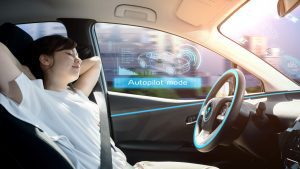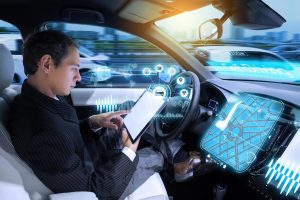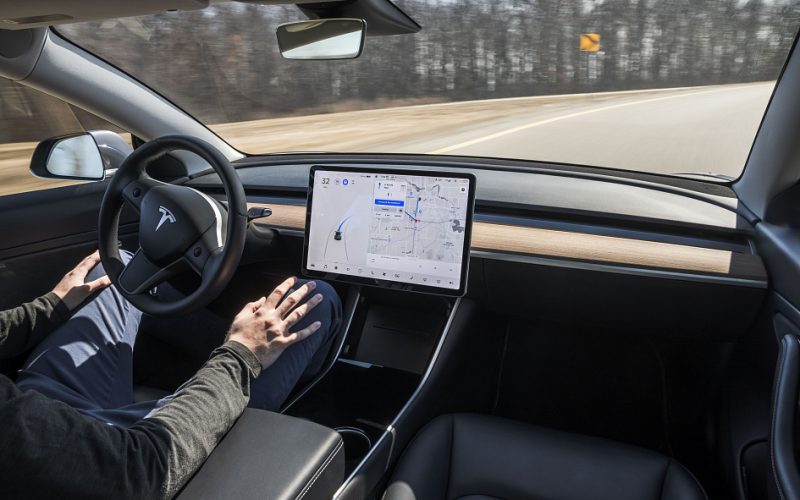Emerging technologies and innovation have paved the way for an exciting evolution in automotive mobility, leading us steadily towards a future of cars with autopilots and full automation. Since the 1990s, engineers and technicians have tinkered with driver assistance systems, ushering us into a new era of highly automated cars. This article will delve into the levels of autonomous driving, shedding light on the iterative development of autonomous vehicles and automation systems.
Understanding the Levels of Autonomous Driving:

Experts have categorized autonomous driving into five distinct levels, each dictating the car’s level of control and driver involvement. Let’s embark on a journey from the car’s driver-only operation to the realm of robo-taxis.
- Level 0 – No Automation: At this level, the driver retains complete control, maneuvering without any support from driver assistance systems.
- Level 1 – Driver Assistance: Cars at this level integrate features like BMW‘s active cruise control with stop & go function, which autonomously manages the distance to the car ahead, significantly enhancing safety and comfort.
- Level 2 – Partly Automated Driving (PAD): Building on level 1, cars with autopilot capabilities incorporate advanced systems such as steering and lane-keeping assistance. Remote-controlled parking becomes a reality, like BMW’s “Personal CoPilot”. Despite these advancements, drivers should maintain active attention to traffic conditions.
Moving Towards Higher Levels of Autonomous Driving:
- Level 3 – Highly Automated Driving: Future systems like the BMW Personal CoPilot will enable higher levels of autonomous driving, giving drivers the freedom to shift their focus away from the road under certain conditions. Cars under this classification can independently navigate long distances in specific traffic conditions, though drivers must be prepared to resume control promptly.
- Level 4 – Fully Automated Driving: Cars with autopilot in this category can autonomously handle a majority of driving situations, even complex urban scenarios like unexpected construction sites. However, the driver should be ready to resume operation if necessary, allowing the car to take control in safe conditions.
- Level 5 – Full Automation: At this pinnacle level, the car assumes all driving tasks, making true autonomous driving a reality. Cars equipped with level 5 automation do not even necessitate a driver’s license or driver’s fitness to operate, extending mobility possibilities even for people with disabilities.
Fully Automated Driving
Level 4 is considered to be fully autonomous driving, although a human driver can still request control, and the car still has a cockpit. In level 4, the car can handle the majority of driving situations independently. The technology in level 4 is developed to the point that a car can handle highly complex urban driving situations, such as the sudden appearance of construction sites, without any driver intervention.
The driver, however, must remain fit to drive and capable of taking over control if needed, yet the driver would be able to sleep temporarily. If the driver ignores a warning alarm, the car has the authority to move into safe conditions, for example by pulling over. While level 4 still requires the presence of a driver, cars won’t need drivers at all in the next, final level of autonomous driving.
Full Automation (No driver!)

Unlike levels 3 and 4, the “Full Automation” of level 5 is where true autonomous driving becomes a reality: Drivers don’t need to be fit to drive and don’t even need to have a license. The car performs any and all driving tasks – there isn’t even a cockpit. Therefore every person in the car becomes a passenger, opening up new mobility possibilities for people with disabilities, for example.
Cars at this level will clearly need to meet stringent safety demands, and will only drive at relatively low speeds within populated areas. They are also able to drive on highways but initially, they will only be used in defined areas of city centres.
Conclusion:
Autonomous driving is steadily shaping the future of transportation, offering enhanced safety, greater comfort, and increased mobility. These advancements in active cruise control with stop & go function and autonomous driving assistance systems are paving the path towards fully self-driving cars. With Full Automation, we are one step closer to witnessing the marvel of vehicles that require no human driver, signaling the dawn of a revolutionary era of autopilot cars.
What once appeared as conceptual dreams in science fiction has started to materialize. As BMW continues advancing its automation technology, soon, the push-button directional stability in the BMW X3 is guaranteed to evolve into a completely hands-free experience. The world of autonomous driving is here, accelerating shift by shift, code by code, towards a future on autopilot.












